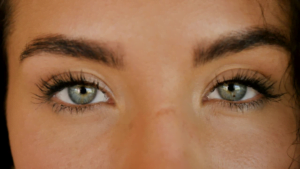In today’s fast-paced and interconnected world, traditional dating norms are increasingly being challenged by alternative dating styles. From polyamory to virtual relationships, these approaches offer diverse paths to connection and love, catering to the needs of those who don’t fit neatly into societal expectations. But what exactly drives these alternative methods, and how are they reshaping the dating landscape? Let’s dive into the complexity of alternative dating and uncover the facts behind this growing phenomenon.
Why Alternative Dating is Gaining Traction
Changing Social Norms
Millennials and Gen Z, known for their progressive values, are redefining what relationships look like. According to a 2023 Pew Research study, over 40% of young adults believe traditional monogamy is outdated and restrictive.
Digital Revolution
Apps like Feeld and OkCupid allow users to specify alternative relationship preferences such as ethical non-monogamy, kink-friendly partnerships, or polyfidelity.
Virtual relationships have grown in popularity, particularly during the COVID-19 pandemic. A 2022 survey by Bumble found that 64% of users tried virtual dates, with many continuing the trend post-pandemic.
Desire for Authenticity
Many individuals feel traditional dating scripts often mask true intentions. Alternative dating allows people to tailor connections around mutual needs and interests.
Ethical non-monogamy, for instance, emphasizes transparency and consent, countering the stigma around cheating or dishonesty in relationships.
The rise of LGBTQ+ acceptance and diverse gender identities has fostered an environment where exploring unconventional relationship dynamics is more normalized.
Breaking Down Popular Alternative Dating Styles
Polyamory
Defined as the practice of engaging in multiple consensual relationships simultaneously, polyamory prioritizes open communication and boundary setting. Studies suggest that couples who practice polyamory and prioritize communication often report higher relationship satisfaction compared to their monogamous counterparts. According to a 2021 study published in Frontiers in Psychology, polyamorous relationships that maintain consistent communication, clear agreements, and emotional transparency tend to last longer, with 65% of surveyed polyamorous individuals reporting stable long-term connections exceeding five years. These findings highlight the potential for longevity when trust and mutual respect are at the forefront.
According to the Journal of Sex Research (2021), around 1 in 6 Americans has explored consensual non-monogamy at some point in their lives. This statistic underscores a growing acceptance of diverse relationship styles in modern society, indicating that alternative approaches like polyamory and ethical non-monogamy are no longer fringe practices. As these styles become more visible through media and community advocacy, individuals are feeling more empowered to explore relationships that deviate from traditional monogamy while prioritizing transparency and mutual respect.
Kink-Focused Relationships
These relationships incorporate BDSM or other kink dynamics, emphasizing trust and mutual understanding.
Studies published in Psychology Today reveal that participants in kink relationships often report higher levels of communication and intimacy than their vanilla counterparts.
Solo Polyamory and Relationship Anarchy
These styles prioritize individual autonomy, rejecting hierarchical structures common in traditional relationships.
A 2020 study from the Kinsey Institute found that individuals practicing relationship anarchy were more likely to report satisfaction with their independence and personal growth.
Virtual and A.I.-Driven Relationships
Virtual relationships, powered by avatars or even AI companions, are gaining popularity among digital natives. Apps like Replika cater to this niche, allowing users to interact with AI companions for emotional and romantic engagement.
Critics argue these relationships might hinder interpersonal skills, but advocates claim they’re a safe and fulfilling option for those struggling with social anxiety or unconventional schedules.
Asexual Dating
Asexual dating focuses on forming deep emotional bonds without sexual intimacy, creating a safe space for asexual individuals to explore love and partnership. This style emphasizes emotional connection and mutual understanding over physical attraction.
Long-Distance Polyamory
Long-distance polyamory combines elements of both polyamory and long-distance relationships. It requires advanced coordination, digital tools, and clear communication to maintain meaningful connections across distances. For example, a polycule where one partner works abroad might schedule regular video calls, shared digital calendars, and planned visits to keep the connection alive while respecting each partner’s needs. Similarly, couples might use tools like Asana or Slack for logistical management, demonstrating that love can thrive even across time zones.
Green Dating
Green Dating focuses on connecting individuals who share an eco-conscious lifestyle and prioritize sustainability. Dating platforms like Veggly and GreenSingles cater specifically to people passionate about environmental conservation, veganism, or sustainable living. For example, couples might bond over eco-friendly activities such as planting trees, hosting zero-waste dinner dates, or participating in climate advocacy events together. This style reflects a growing trend where shared values, especially concerning the planet, are the cornerstone of romantic connections.
Social media platforms like Instagram and Pinterest host vibrant eco-conscious communities, offering inspiration for sustainable date ideas and DIY projects. Groups such as “Sustainable Love” on Facebook create a space for couples to share experiences, tips, and success stories about integrating green practices into their relationships. Additionally, platforms like Meetup provide opportunities for eco-minded singles and couples to join local clean-up drives, tree-planting events, or environmental workshops, further fostering connections through shared commitment to sustainability.
Adventure-Based Dating
Adventure-based dating is centered around shared experiences and adrenaline-fueled activities as a means of building strong romantic connections. This style appeals to thrill-seekers and nature enthusiasts who prefer bonding over hiking, rock climbing, or exploring new destinations together. Couples may choose this approach to deepen their relationship through teamwork, trust, and the excitement of stepping out of their comfort zones. Dating apps like Outdoor Duo cater specifically to adventurous singles, helping them connect over a love for the outdoors and shared challenges.
The Challenges of Alternative Dating
Societal Stigma
Despite growing awareness, people in alternative relationships often face judgment or misconceptions. A 2023 study by the University of Michigan found that 35% of Americans hold negative views of polyamorous individuals.
Emotional Complexity
Managing multiple partners or unconventional dynamics requires advanced emotional intelligence, strong boundaries, and resilience to navigate potential jealousy or misunderstandings.
Legal and Financial Hurdles
Marriage laws and benefits still cater to monogamous couples, leaving those in alternative arrangements at a disadvantage. Advocacy groups like the Polyamory Legal Advocacy Coalition are working to address this imbalance.
How to Approach Alternative Dating
Educate Yourself
Before diving into any alternative style, read up on its dynamics and ethical practices. Resources like the book The Ethical Slut or communities such as Reddit’s r/polyamory offer valuable insights.
Communicate Clearly
Transparency is non-negotiable. Clearly outline expectations, desires, and boundaries with potential partners.
Seek Supportive Communities
Online and offline communities can provide guidance and camaraderie. Local meetups, forums, and support groups cater to various alternative dating styles.
The Future Of Alternative Dating
As societal attitudes continue to shift and technology evolves, alternative dating is poised to become even more mainstream. Its emphasis on authenticity, consent, and inclusivity challenges outdated notions of relationships and opens the door to new possibilities for connection.
Alternative dating isn’t just a trend—it’s a reflection of a more diverse and accepting world. By embracing different approaches to love and connection, we can build relationships that genuinely align with our values and desires. Whether you’re curious about exploring these paths or simply want to understand them better, the key is an open mind and a willingness to learn.





